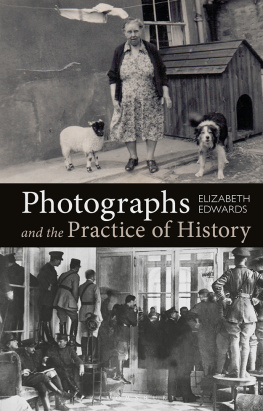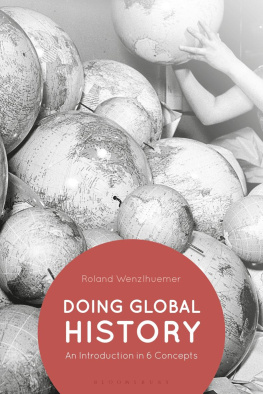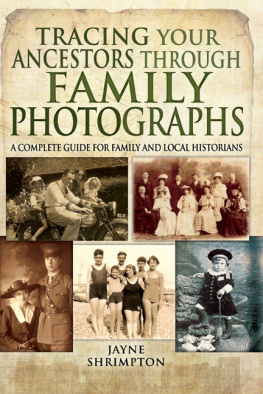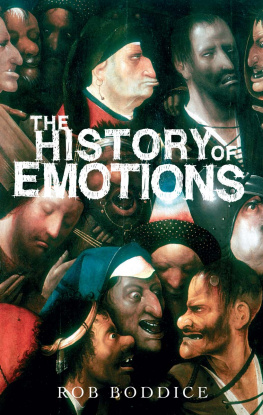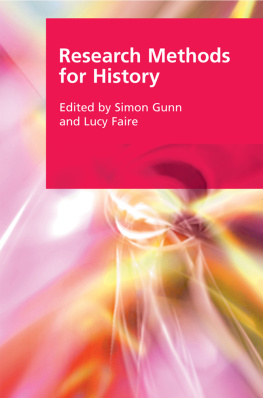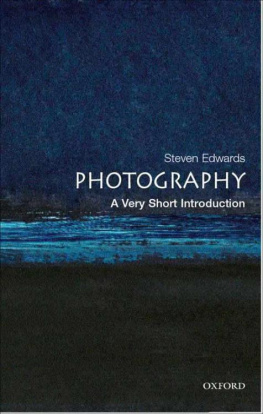Photographs and the Practice of History
Photographs and the Practice of History
A Short Primer
Elizabeth Edwards

For the wonderful women of the
Floating Republic
Photographic technology belongs to the physiognomy of historical thought there can be no thinking of history that is not the same as thinking of photography.
What is it to write history or indeed be involved with wider forms of history making in an age in which photographs exist? This is the starting point of this book. The book is not about how to use photographs as historical sources, nor a volume on historical method, nor on the philosophy of history. Rather it looks quite pragmatically at the intersection of photographs with a series of values and assumptions that underpin the practice of history, often unarticulated, except in the recesses of theory of history. Historian Peter Gordon has noted that [m]any historians would be disinclined to back themselves up out of their actual activity as historians to reflect upon the meta-presuppositions of what they do. This certainly reflects, with a few exceptions, the general approach to photographs within history. But no practice is metaphysically innocent: nor, therefore, are the implications of the intersection of history and photographs, and the ways in which the latter do indeed belong to the physiognomy of both historical thought and historical practice. With the increasing interest in photographs as historical sources, in the methods and historiography of visual histories, and in the related studies of archives and museums, it seems timely to explore these most fundamental of questions. What do photographs do to history? What are the implications of the very existence of photographs for other forms of historical representation? What disturbances do they cause? What are the patterns of embrace and resistance to photographs within the wider practice of history? These are the questions that weave their way through this short book. Thus, as I say, what follows is not about the meaning of photographs, but about how their very presence, as entities, infiltrates our ideas of what it is to do history. I want to heighten sensibilities and provide food for thought.
A couple more comments on aims: although broadly addressed to the practices of academic history, this book is for everyone interested in the implications of the intersections of history and photographs and what photographs might do to how we go about our historical business. It is not necessarily for historians of photography or even visual historians, although I hope they will find it interesting and useful. In particular, it is for students, the disciplines new generation, who are starting to think with photographs within historical studies. It is also for traditional, perhaps text-heavy, historians, be they of empiricist or postmodernist or post-postmodernist inclinations: those who havent really engaged with photographs because, for whatever reason, they didnt think they needed to. Perhaps they are unaware of the ways that photographs might open up what has been taken for granted for years: how photographs actually change the whole relationship with the past, and contribute to changes in the discipline that aims to make sense of that relationship.
Broadly speaking, this book could have been written in two ways: as a small, short, essayistic and even gestural text, or as dense and weighty volumes of closely footnoted theory or philosophy of history. Each of the topics of my short chapters could be the focus of a whole book. As the densely theoretical and heavily footnoted option would probably try the patience of all concerned, I have taken the former essayistic route, and hope that someone out there will pick up the gauntlet and produce that latter. In any case, I make no claims to be a philosopher. Rather, I am pulling together thoughts that, as I work in the borderlands between anthropology and history, have shaped my questioning of the wider relationship between photographs and the practice of history for many years. In many ways the shorter the book, the tighter and more difficult it is to write, and these are topics with a pronounced tendency to sprawl. The essays, as my title suggests, are a primer, offering key elements, as I see them, and that we might like to ponder at the intersection of method and theory. I make no claims to be comprehensive. Many questions are left answered and inevitably weighty topics make all too brief appearances. They invite further analysis. But given the multitudinous forms of both history and photography, it was never my intention to provide answers; but rather to bring a set of ideas into the frame, and to lay out a set of sensibilities and an experimental space. I hope these will mingle creatively with our established practices as historians, in the broadest sense, as we attempt to address the ways in which photography does indeed belong to the very physiognomy of historical thought. As Mark Salber Phillips has noted the deepest reforms [in practices and beliefs] trace a path back to the heart of a discipline and find new challenges in its oldest traditions.
Some might be surprised by the sparse use of images. But as I have stated, this is not a how-to book. It is not concerned with how photographs work, or not, as historical evidence, or what they might mean on the ground, so I am not providing that kind of example. Many others have done this admirably. Also, I have long been disturbed by the cavalier use of photographs as illustration. So I have resisted the temptations of gratuitous decoration beyond the inter-chapters which, in addition to providing a sense of the visual within the book, are intended to work metaphorically with their chapters metaphors always have work to do. They point, especially, to the ambiguity and possible unknowability of photographs. Their work and intention here is to present readers with a positioning think-space rather than meaning.
Why not consider film, a number of people have asked me? Certainly, an exercise such as this would be a valid undertaking in relation to film, video and digital modes of inscription, transmission and communication. But it is necessary to understand the specific nature and action of a medium as a mode of transmission, and thus its impact on the practice of history. Despite surface similarities and a bracketing as visual, my argument applied to film would be related but different. Film, the long quotation of linked moments, carries a wider contextual framing within it, as opposed to photographys short quotation of the single moment, a fragment of time. While film shares some characteristics with photography, notably temporal construction, representation and immediacy, it lacks the temporal and spatial density of photographs or their particular forms of scale and legibility. As Christian Metz put it, if film lets us believe in more things photographs allow us to believe more in one thing that is long quotations of related moments as against short quotations of the fragment. While, as well see, photographs have their own forms of movement, they focus our attention in different ways. Photography offers its own forms of accuracy, knowability and memory which inflect and intersect with history in different ways. In the digital age with its blurring of stillness and movement, and the fact that many millions of photographs feed digital sources of all kind, to look at the photograph might seem somewhat restricting. There is, nonetheless, a sense in which historians have yet to get to grips with the implications of photographs for their practice, never mind the digital. The intersections I talk about are equally applicable in their disturbances in the digital age, so their discussion as photographs merely become more urgent. Whatever we work on, it is becoming increasingly imperative to think about the visual in history, and the ways in which thinking about photographs is also thinking about history.
Next page
